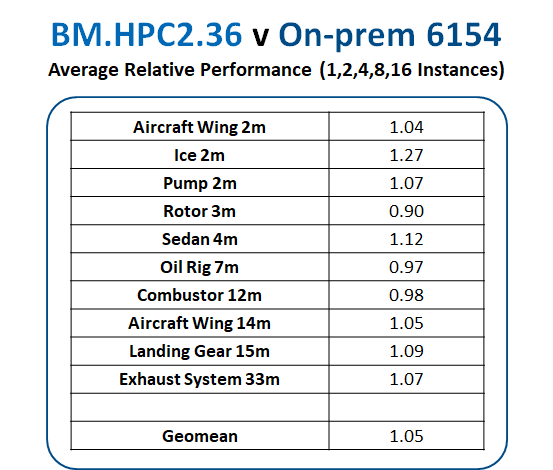Ansys provides cutting-edge CFD simulation software
Computational Fluid Dynamics (CFD) makes up one of the largest branches of Computer-Aided Engineering. Used in many engineering industries for design and development, CFD is ideal for modeling scenarios such as turbulence around solids, heat exchange and radiation, reacting flows, acoustics and multiphase flows.
“The collaboration with Oracle Cloud Infrastructure enables our customers to run Fluent simulations in a bare metal environment with the same world-class experience and consistency that they have on-premise.” – Wim Slagter, director, strategic partnerships at Ansys
At the forefront of CFD simulation software is Ansys Fluent, developed by ANSYS Inc. and used heavily in both Academia and Industry. Fluent software applications range from air flow over an aircraft wing to combustion in a furnace, from bubble columns to oil platforms, from blood flow to semiconductor manufacturing, and from clean room design to wastewater treatment plants. Special models that give the software the ability to model in-cylinder combustion, aeroacoustics, turbomachinery, and multiphase systems have served to broaden its reach. With Fluent, users have access to solvers that take advantage of Intel Message Passing Interface (MPI) and Advanced Vector Extensions 2 (AVX2) CPU optimizations. Upon the release of Fluent 2020 R1, users can now also incorporate Math Kernel Libraries (MKL) to utilize Intel MKL sparse LDU smoother functionality and obtain a 10-20% performance increase [See Ansys Fluent Simulations at Top Speeds on Intel].
Intel Optimizations with Ansys Fluent on Oracle Cloud HPC
To evaluate the use of Intel optimizations with Ansys Fluent 2020 R1 on Oracle Cloud Infrastructure, Intel and Oracle collaborated with MVConcept to run several validation tests. The instance selected for the analysis was Bare Metal HPC (BM.HPC2.36) because of its high-performance Intel Xeon Gold 6154 processors and RDMA networking for maximizing performance in tightly coupled workloads. The models evaluated were standard benchmarks developed by Ansys.
For each Ansys model, both baseline and optimized runs were conducted at the settings below:
| Setting | Baseline | Optimized |
| Instance Count Evaluated | 1, 2, 4, 8, 16 instances | 1, 2, 4, 8, 16 instances |
| Processes Per Node | 36 |
|
| Hyperthreading | ON (default) | OFF |
| MPI | Intel MPI 2018.3.210 with -mpiopt to enable RDMA (see Running Applications on Oracle Cloud Using Cluster Networking) | Intel MPI 2018.3.210 with -mpiopt to enable RDMA (see Running Applications on Oracle Cloud Using Cluster Networking) |
| AVX2 Optimization (platform=intel) | NO | YES |
| Intel Math Kernel Libraries |
NO | YES |
Using the optimized settings, Fluent performance increased 10% to 15% on-average for each model. This increase in performance was seen in both small and large models, as shown in the figure below.

By isolating each individual parameter to evaluate performance further, the inputs that had the largest impact were disabling hyper threading and incorporating Math Kernel Libraries. Many of the settings and run procedure to enable these are captured in the Ansys Fluent Runbook that can be downloaded from the Oracle CFD HPC page.
“We are excited to see the compelling performance and scalability of Ansys Fluent on the Intel architecture-based instances of Oracle Cloud Infrastructure. We look forward to our continued collaboration with Oracle to further leverage Intel’s latest technologies and deliver new levels of performance for our customers”. – Kirti Devi, Director of Global Alliances, Data Platforms Group, Intel.
Oracle Cloud Outshines the Performance of On-Premise Environments
Where possible, Oracle Cloud data was also compared with an on-premises environment, where each server contained two 3.7GHz Intel Xeon Gold 6154 processors and 100 Gbps Intel OPA. In other words, each on-premises server had the same processor type and same number of cores as each Bare Metal OCI instance. The figure below shows that for most models, even the small ones that tend to scale worse, Oracle Cloud HPC met or surpassed the performance of the on-premises environment. The table below shows the relative preformance of Oracle Cloud Infrastructure to the on-premise environment.

As you can see, by using powerful Intel processors and optimized settings, Ansys Fluent performance is unrivaled on Oracle Cloud Infrastructure.
Get started today on a solution that fits your workloads
Start your 30-day free trial and get access to a wide range of Oracle Cloud services for 30 days. Or if you’d like more guidance, get hands on experience with our cloud on our LiveLabs platform.
Learn more about running HPC workloads on OCI with the following documentation:
